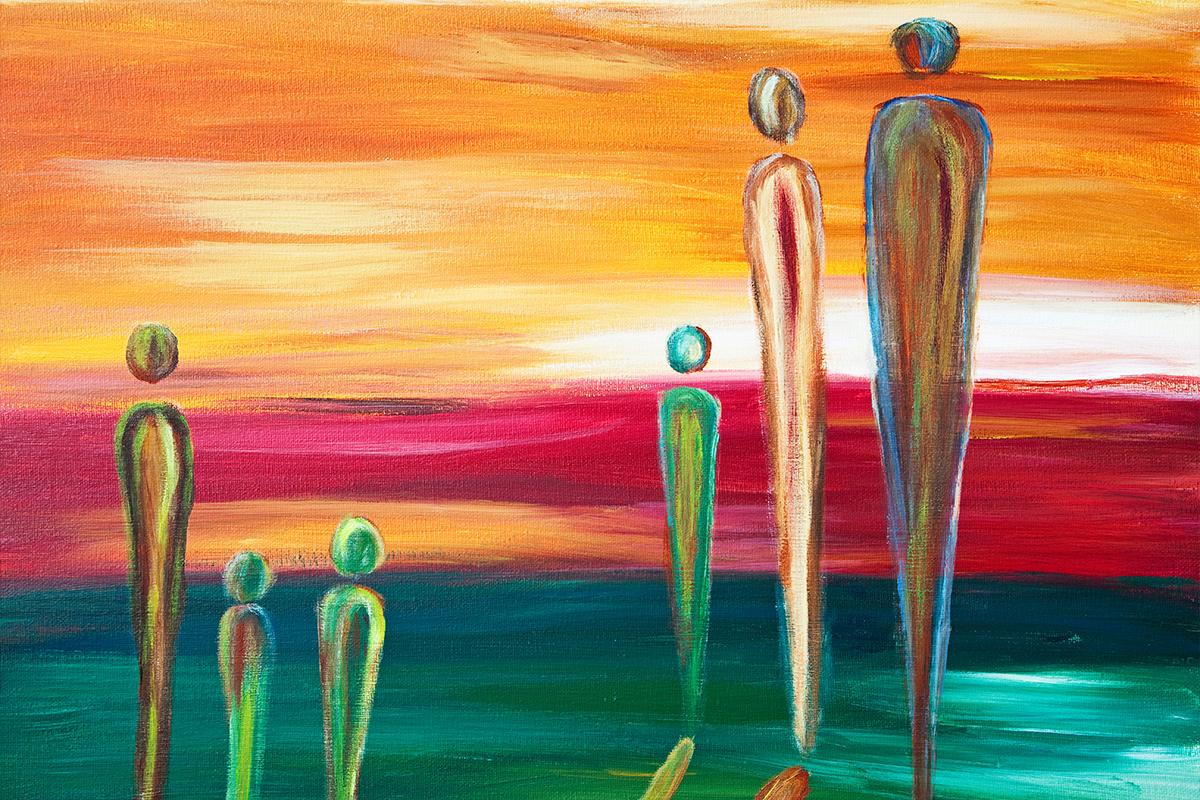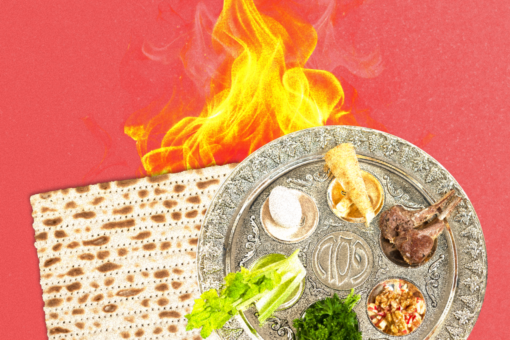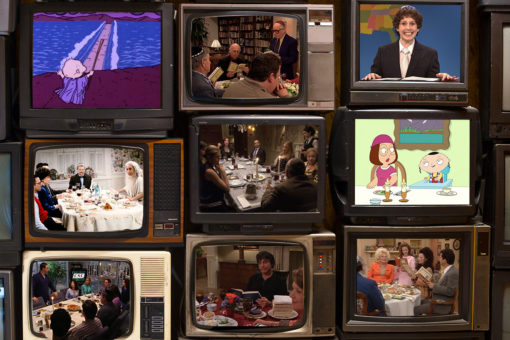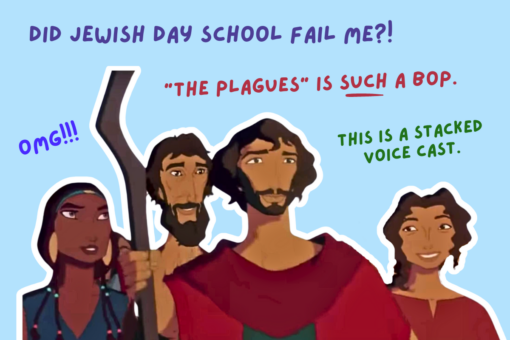Last Hanukkah, my dad gifted me the classic book “The Joys of Yiddish.” Though it actually might have been a Christmas present — I can’t remember. It wouldn’t have been that odd for me to receive a book about the language of Eastern European Jews under the Christmas tree rather than next to the menorah. It would just merely reflect my family’s multiple cultural influences and how my parents, an American-born Ashkenazi Jewish father and a Spanish-born Catholic-raised mother, have embraced each other’s traditions and heritages. Mom makes the latkes, Dad hangs the Christmas lights.
Regardless of whether it was Hanukkah or Christmas, the gift was perfect for me, for I had already been wanting to learn Yiddish for some time. This wouldn’t surprise anyone who knows me, because I am a foreign language enthusiast. A native English speaker, I have learned Spanish and German to advanced levels, can speak basic conversational French, have dabbled in Russian and also immersed myself in reading Ladino for academic work. My bookshelf has children’s books in Hungarian and bilingual poetry editions and non-fiction works on linguistics; language-related apps and podcasts eat up my phone’s storage capacity; and I find doing foreign-language grammar exercises relaxing. Really.
It’s therefore easy to understand how an outsider — or even my friends — could see my desire to learn Yiddish as a mere continuation of my polyglot exploits, a new language I could add to my list relatively quickly, thanks to its significant Germanic roots. Learning Yiddish also appears to be trendy right now. Duolingo said its new Yiddish course, which launched in April, has some 259,000 active learners, most of whom are in the U.S., followed by the U.K., India and Germany. The YIVO Institute for Jewish Research, which offers Yiddish classes of all levels to hundreds of students every year, told me it had seen a 443% enrollment increase last year after it made a pandemic transition to online classes, allowing far-flung future Yiddishists to sign up. The Workers Circle, a nonprofit where I currently take beginners Yiddish and which has offered online classes for years, said it has also seen its digital student body grow from 40 in 2014 to 473 in spring 2021. The participants came from 28 countries and 32 states. Yiddish language learning, it seems, is booming.
The Workers Circle told me that they believe people mainly take their Yiddish courses for professional and academic reasons, to learn about Ashkenazi culture and to research family roots. In thinking about my own reasons for taking Yiddish, I am not so far off from the last category. After all, I would love to know more about my father’s grandparents, who immigrated to the U.S. in the late 19th-century from present-day Poland and possibly Belarus. My father’s paternal grandfather, or zayde, spoke only Yiddish — not unusual in New Haven’s thriving Jewish community, where the family lived.
Where exactly did my relatives come from? Are there any documents that testify to what their lives were like before they joined the millions of Yiddish-speaking Jews who immigrated to the U.S. during that era? Are there correspondences that speak of their experiences orienting themselves as immigrants and first-generation Americans? What books, newspapers, movie posters, bakery signs, songs were part of daily life on Legion Avenue?
I’d love to be able to answer these questions, and learning Yiddish can be a step to doing so. But in addition to getting a fuller picture of my family history, there is something else that drives me.
For me, learning Yiddish is a way to embrace my Jewish identity in a manner that feels right.
Despite being raised bi-culturally by parents who imparted to me the importance of appreciating family heritage, celebrating diversity, and being culturally syncretic and inclusive, I’ve struggled to self-assuredly connect to my Jewish heritage. I can’t say whether it is because I never learned Hebrew, never went to synagogue, never observed Shabbat or never regularly saw most of my Jewish relatives due to age differences and distance. Or perhaps my insecurity was fed by the skepticism I’ve faced — from remarks dropped in Jewish college fraternities about my first name, to having a complete stranger tell me during airplane small talk that I was not and could not be Jewish because of my paternal lineage. I just long felt that while I obviously had Jewish heritage, I didn’t know how I ticked the boxes of “being Jewish.” My Spanish side always felt much closer, tangible, knowable. I had a passport and a national flag I could point at. I also had the Spanish language, which I already somewhat knew at a very young age and used to talk to my maternal relatives. Speaking was belonging.
As I progress in Yiddish, I won’t be able to use it to talk to anyone in my family; while my father understands a fair deal thanks to his grandfather and can spice up his sentences with the language’s unique specific words, neither he nor any of his cousins speak it. But when I log on to my Zoom lessons, I am greeted by faces in boxes who smile, ask enthusiastic questions, share familial anecdotes and vocabulary, and are motivated, just like me, to discover the richness of this transnational language. It feels like a community, I feel like I’m a part of it, and that feels nice.
In learning Yiddish, I have purposefully chosen to discover, participate in and carry on a culture that stretches back centuries, has traversed continents, oceans and generations, and continues to evolve today. I have chosen to explore this culture’s modes of thinking, its sense of humor, its inflections of incredulity, celebration, grief. And it is a self-empowering choice, because when I am learning languages, I feel like my truest self.
But learning Yiddish also makes me feel like a fuller self. It has awakened a part of me that I was never quite sure how to activate. As I sound out diphthong-laden words and decipher the elegant curves of a new alphabet, I feel energized, grounded and more whole within my beautiful mishmash of cultural influences.
Not too long ago, I spoke to a dear elderly cousin of my father on the phone. I told her I was learning Yiddish. “Oh,” she said, her voice suddenly perking up, “Zayde would have been so proud. He always wanted us to learn it.”
I like thinking that Zayde would have been proud. I wish I were able to bend time and meet him, talk to him. I can’t, of course, but I can learn to speak his language — and I am. And I am proud I can now confidently say, this, too, is part of who I am.



